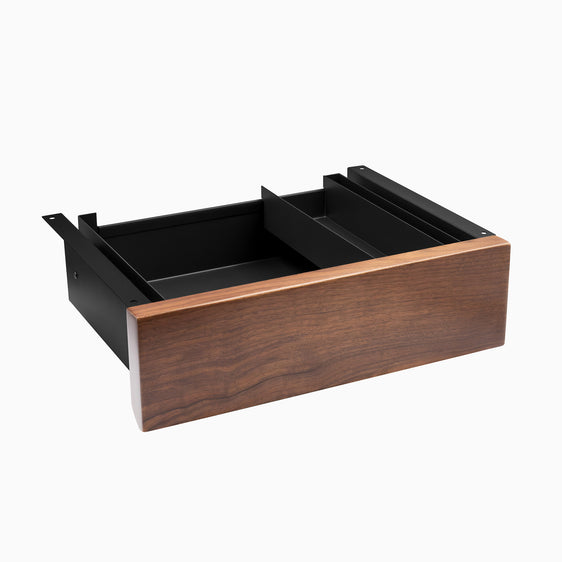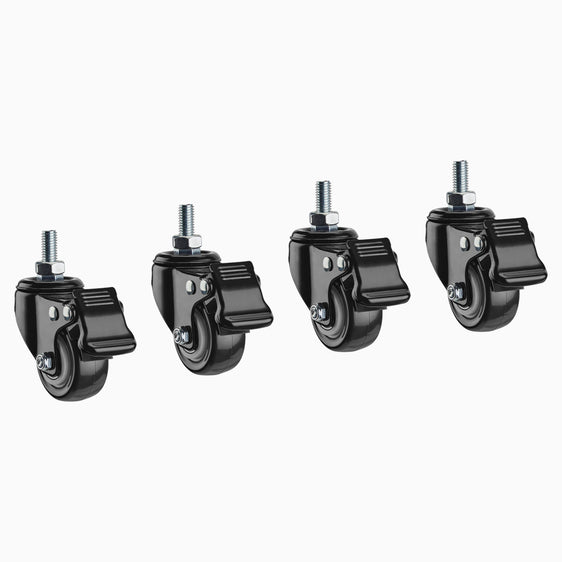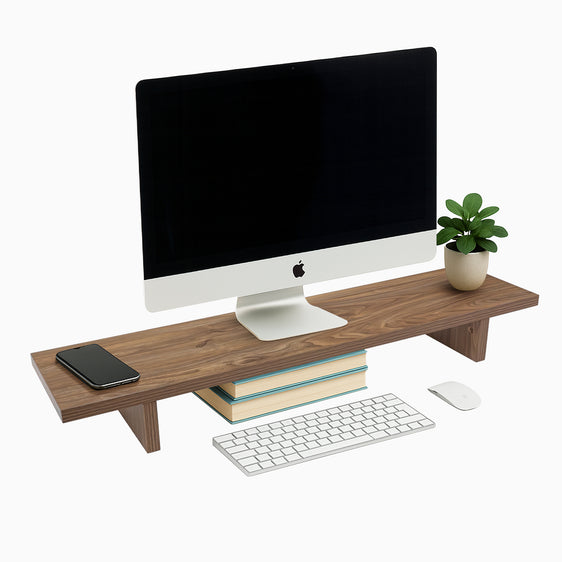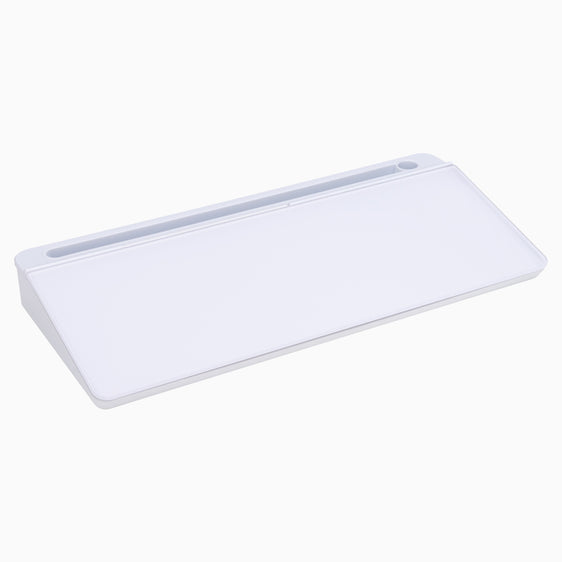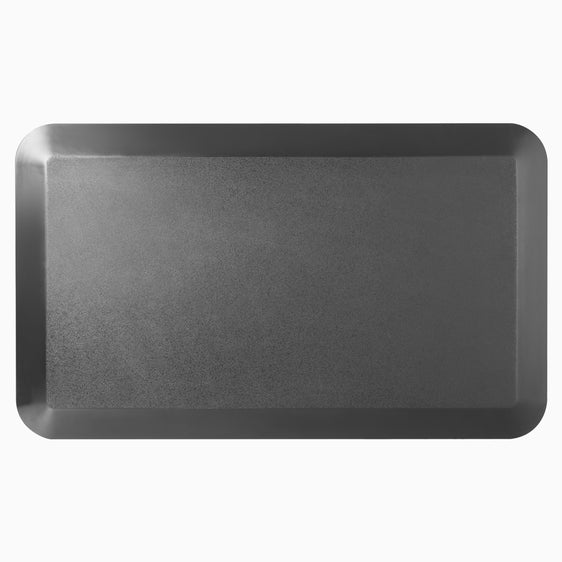
News
Fitness Experts Advise On Ways To Stay Fit When You're In A Sedentary Job
Hayden Adams“Get up, go to work, go home”. It seems to be the 9-5 mantra for most people who have an office job.
If you’re not battling traffic or commuting on public transport, you’re sitting at a desk for long periods of time.
Either way,s a recipe for sore, aching muscles, painful joints, and, as we’ll see, potentially a whole of other medical conditions.
Of course, having the right desk goes a long way to helping with any aches and pains that arise during the course of a long working day, but there are other mitigating steps we can take too.
Some people actively enjoy the gym and find it a pleasure to get in there before and after work to move their bodies and get the endorphins pumping.
For some of us, it’s just not possible—it might be down to cost or a genuine dislike of that kind of environment. It doesn’t mean you can’t exercise. There are gentler, kinder ways of keeping fit that can make you feel great without the cost if you’re stuck in an office for 40 hours a week.

We’ve got together with some experts who’ll walk us through (see what we did there?) some of the ways you can stay fit when you’re in a sedentary job, and they’ll also tell us about the importance of gentle movement every day to keep us supple and trim.
What are some of the negative effects of sitting at a desk all day?
Too much sitting can increase your risk of exposure to the following health risks and diseases:
-
Heart attack and heart disease: Cardiovascular disease is one of the biggest killers of Americans, partly due to the increased frequency of a sedentary lifestyle.
-
Stroke and blood clots: Similarly, strokes, and the blood clots that can cause them, are more likely to form by someone sitting all day.
-
High blood pressure: Without exercise to help flush out the plague in the arteries, someone who sits all day has an increased chance of having high blood pressure.
-
Blood circulation loss: With poor blood flow and increased pressure, the body can’t circulate blood in the same way.
-
Muscle weakness: Between the lack of exercise and blood flows, muscles weaken as they receive no reason to grow or nutrients from being sedentary.
-
Weakened immune system: Because most sitting happens indoors, your body isn’t exposed to the same immune signals or sunlight for vitamin production, weakening your ability to fight infection.
-
Cancer risk: Finally, tumors are more likely to form in folks with sedentary lifestyles than those that get some exercise each day.
Sedentary Lifestyle: Reasons Why Sitting Is Killing You
Studies have been done to determine how much sitting is too much for the body. In general, it’s recommended that over an eight-hour workday, you should try to be standing for at least half of it.
It can be hard to start off doing this though, especially for the majority of adults that tend to be seated while working. Ideally, you’d want to start by standing at work for two hours a day and working up from there. There are also concerns surrounding standing long periods during work. This has led to some countries passing laws on the Right to Sit at the workplace. Bottom line is holding the same position while working for long hours leads to health issues.
However, there’s more to life than just work. It’s estimated that the average adult spends an additional two hours each day sitting at home, bringing the total number of hours seated a day to ten. Considering that four hours is the maximum folks should be aiming for, it’s no surprise that so many adults report conditions that can be linked back to sedentary habits.
How much exercise do you need to do to offset your desk job?
“In 2020, a meta-analysis of nine previous studies(5), using data obtained from fitness trackers and feedback from 44,370 participants around the world, suggested that about 30-40 minutes of moderate to vigorous physical activity should offset ten hours of sitting.
If that feels unachievable, don’t despair, as more recent research(6), suggests that only 22 minutes of exercise is enough. This later study, published in October 2023 in the British Journal of Sports Medicine, set out to determine exactly how much sedentary time was associated with a higher risk of early death—and how much corresponding physical activity was required to offset that risk.
 As part of the study, around 12,000 people from Norway, Sweden, and the U.S. wore fitness trackers for at least four days each week, over a period of at least two years. Comparing the activity data with death registries and medical outcomes, the results showed that participants who exercised for less than 22 minutes a day had a 38% higher risk of death from any cause.
As part of the study, around 12,000 people from Norway, Sweden, and the U.S. wore fitness trackers for at least four days each week, over a period of at least two years. Comparing the activity data with death registries and medical outcomes, the results showed that participants who exercised for less than 22 minutes a day had a 38% higher risk of death from any cause.
Those who undertook 22 minutes of exercise or more each day had better health outcomes and typically had a longer lifespan.” Kerry Beeson BSc (Nut Med) Nutritional Therapist & Metabolic Balance Coach writing for PrepKitchen
Tell us how we can move more whilst we’re at our desks.
“We’ve talked about the benefits of moving every day before, but when you’re living behind a desk these are even more important. You’re being inactive for long periods every day – try balancing it out with a little bit of active, healthful movement every single day.
Finding a way to get some movement in at work – even if it’s simple like a walk around or a bit of desk stretching – can help. Get yourself up every 30 or 60 minutes on the dot to take a short walk around, even if you’re just going to get some water. Unbroken periods of sitting are worse for health because posture declines over time.
Activity, even walking, helps re-activate the muscles and keeps you conscious of desk posture. A short walk to break it up could be all it takes to help keep you active and keep those muscles switched on.” Beth Giddings with medical review by Sian Baker Dip ION mBANT mCNHC writing for The Health Hub.
Can you give a couple of examples of exercises that people in sedentary jobs might be able to do at their desk?
"While nothing can beat doing a proper exercise program involving free-weights and cardio, there are some great exercises you can do at your desk to tide you over until you can get to the gym.
Squats, shoulder, neck, and back stretches are going to be some of the best choices for those with a sedentary job. Give this quick desk workout a try, and we guarantee you will feel better and be more productive throughout your work day!
{{ spec_dual_bamboo_desk }}
Stand up from your chair, then lower yourself back down until your butt lightly touches it. Repeat for 3 sets of 10 reps with a one-minute break. Sit tall and roll your shoulders forward in a circular motion, then reverse the direction, doing 10 reps in each direction. Gently tilt your head to one side, bringing your ear towards your shoulder, until you feel a stretch along the side of your neck.
Hold for 15-30 seconds, then switch sides. Finally, sit upright in your chair and twist your torso to one side, placing one hand on the back of the chair and the other hand on the opposite thigh. Hold the twist for 15-30 seconds, then switch sides.” Troy Teebom, Owner kurstudios.com
What simple fitness tips can you offer for someone in a sedentary job?
Some of my quick and affordable tips to stay fit in our new era of Zoom meetings and remote working:
1) If possible, eat healthy, well-balanced small snacks and meals throughout the day. Then, when it comes time for a lunch break, take a walk/bike ride/quick trip to the gym. Even if you are short on time, walking for 10 minutes helps! It can be down the hall or around the block. Stay active during your break time!
2) Carve out 5–10 minutes every 2-3 hours to move. It can be a few stretches or some bodyweight exercises. If you have the space (and privacy) do some lunges or squats. No equipment is needed! Set goals: 20 lunges in 2 minutes and then back to work!” Lisa Cargill The FEST Team, FitnessFest.Org
Could you recommend two exercises people in sedentary jobs would benefit from
“1. There are certain parts of the body that tend to hold physical tension when you are mentally stressed. Stretching these areas 1-3 times throughout the day can help relieve physical pain brought on by stress. First take your right arm up and over your head so your fingertips are touching your left temple. Gently pull your head towards your right shoulder. Take 3 deep breaths (at least 4 second inhale and 4 second exhale). Stay in that position and slightly lower your chin to your chest and repeat with 3 deep breaths. Gently return your head to an upright, neutral position and switch sides.
2. Something as simple as standing for 1 minute every hour (and taking your eyes off your monitor) can help boost blood flow and circulation. This will help re-energize your mind and body! Don't forget to stay hydrated - water helps you feel full and energized, and it improves focus.”Courtney Fickes, Certified Personal Trainer wellteamculture.com
What yoga poses can help with staying fit in a remote office space?
“I love doing down dog pose to fully stretch my body after sitting at a desk all day long.
Triangle pose is another great pose to reset the body because of the twisting motion - it is energizing, balancing and helps improve focus.” Lindsey W Co-Chief Retreat Finder retreatfinder.com
What daily habits do you suggest to minimize sedentary lifestyle risks?
Unfortunately with the increase in remote work it has meant the increase of time in front of computers and electronic devices. The increase in screen time has taken a serious toll on posture and our underlying spinal structure. Left untreated, this can not only lead to the unattractive cosmetic changes we associate with poor posture and general soreness/tightness but it can have some serious repercussions over time such as losing our spinal mobility and range of motion causing us to slow down and age quicker, the wear and tear of the spinal joints (spinal arthritis) and the wearing down of our spinal cushions or discs (degenerative disc disease).
Some of these conditions such as spinal arthritis and degenerative disc disease cannot be reversed once they start but they CAN be slowed down or stopped with treatment and postural exercises. But the thing to really know is that they can be prevented altogether if detected and treated early by chiropractic professionals trained in and using the techniques to help with structural spinal health.” Dr. Darrin Redinger of Illinois Spinal Care of Elmhurst
What type of massage is most beneficial for people who sit all day?
The most beneficial type of massage for people who sit all day is myofascial release. The reason for this is when you're sitting all day, the tissues of the body are under immense pressure from gravity. Myofascial release helps to unwind and decompress the tissues in between muscles that keep the body in a state of dysfunction. Mason Palmer, Founder of IMMERSE Modern Massage, Portland
Can you recommend a quick yoga routine for midday work breaks?
Mindfulness and movement practices can be a great mid-day reset. My favorite simple refresh practice is: While Seated, take 3 slow, deep belly breaths, in the nose and out the mouth. Stand up and stretch, move your spine side to side, and take a few gentle twists. Cross your arms as if you are hugging yourself, inhale, engage your glutes and arch your back while looking to the sky, then exhale and fold forward. Do this a few times moving with your breath. Once finished, while standing, shake your body vigorously for 30 seconds up to 3 minutes, all while taking deep belly breaths. When done shaking, stand in stillness, take 3 slow deep belly breaths, and notice how you feel. You may notice you feel a little more awake and a little less stressed. Jenn Crawford Owner and Yoga Instructor at Zen Riot Yoga & Wellness Studio
How can Mechanical Diagnosis and Therapy help people with sedentary jobs to stay fit and healthy?
Mechanical Diagnosis and Therapy (MDT) is a mechanical classification system that allows a well-trained clinician to classify low back pain (and any other joint of the body). The client is then educated on how to treat themselves multiple times daily. Risk factors for low back pain, for instance, are frequency of sitting and bending daily. Studies tell us we sit or bend to some degree 3-5000x/day. Sedentary is definitely the enemy. Our MDT mechanical exam allows the clinician to classify the client's pain and to educate them on the reason they get the pain due to the cause and effect relationship of their daily activities and the onset of pain. Insidious onset of pain is not random. It is due to putting tissue in a compromised position, leaving it there repeatedly or over time. The tissue starts to break down. When you have pain, you cannot exercise. Once you understand the way we sabotage ourselves with our lifestyles, it becomes easy to self-manage by decreasing the damaging behavior and performing the "re-set" movement to counter and decompress the tissue in question. The body is amazing and will heal itself, if we allow it. It is broken down due to our bad movement patterns/positions. It can be healed by reversing these bad behaviors. When we are in pain, it is hard to maintain fitness. MDT empowers our clients to manage and treat themselves while remaining as active as they can without worsening their condition. Our bodies heal best when we move more, not less! Lee Poston PT, Dip. MDT, GOATA Level II coach, CSCS Owner, Therapeutic Associates of Maui
How might a health retreat benefit someone in a sedentary job?
Our health center provides many specific treatments. However, our most effective and longest lasting method of healing occurs through educating and motivating our guests to make changes in their lifestyle. One of the Laws of Life that we bring attention to at BHHEC is the need for our bodies to be active. Even with a sedentary job, there are many ways to incorporate movement of the body into our daily routines. Many small, frequent activities throughout the day will accumulate and have a large positive effect on our bodies. Steve Whitely, Black Hills Health & Education Center
How can participation in the arts benefit health?
The benefits to all ages are miraculous for overall well-being. The arts provide a holistic approach to health and well-being, addressing not only physical but also emotional, social, and cognitive aspects of human health. These include the following: stress reduction, improved mood, enhanced cognitive function, increased self-expression, social connection, promotion of mindfulness, increased focus and concentration, pain management, improved motor skills, enhancing fine motor skills and emotional healing. The arts are particularly beneficial for individuals dealing with trauma, grief, or emotional challenges, providing a safe space for exploration and healing, and lastly, a sense of accomplishment. Extensive studies have shown 89 physical, emotional, cognitive, and social well-being attributes that help quickly produce what are viewed as miracles in small classes or settings. It's a shame the arts are the first classes cut in the school systems, and or are offered the least of all classes. In closing, it is truly astounding what the arts do to achieve transformation in rapid and miraculous ways. Mariann Almonte,
Executive Director at Courthouse Center for the Arts
Can seeing a chiropractor help you stay fit in a sedentary job?
Yes, working with a chiropractor can help you stay fit in a sedentary job, by helping undo forward head posture, and loss of spine, neck, and shoulder mobility. Also, a chiropractor can provide coaching, which helps you approach fitness in a way that reduces stress on your spine. Dr. Zachary Ward, Upper Cervical Chiropractor at Life in Alignment
Why is keeping a healthy weight so important to help people with sedentary jobs to stay fit and healthy?
Most Americans sit while they work, and most are overweight. Productivity decreases with the amount of work the body performs. Keeping extra weight just gives the body more to do, energy that could be used for getting ahead at your job. We have all heard that "sitting is the new smoking", and it's mostly true. An easy way to to not only be more productive at work, but also to help your body not "smoke while sitting", is to maintain that healthy weight. For women, watch extra weight in your thighs, guys get rid of that gut! Dr Joseph Hayes, Chiropractor and Founder of Integrative Chiropractic & Weight Loss
In a seasonal industry, how do you help the team to stay fit during quiet months?
In a seasonal industry, in this case being a seasonal lavender crop farmer, we have several different methods of ensuring we stay active and healthy all year round.
This includes the use of stand-up desks and stools to encourage movement in our office, attending a yoga class led by one of our staff members, and every Monday morning, we participate in a fitness class with our local trainer, Kelly. We also enjoy jogging with staff
members’ dogs during our lunch break. We also attend markets and expos that require heavy lifting as we move our products back and forth from venues in the winter. It is incredibly important for our team to stay fit both for our mental health during long New England winters, and for us to be prepared for the upcoming lavender season. Exercising together not only strengthens our workplace bond and communication, but also helps us alleviate any stress we have stored away in our bodies, and helps us jump into the week with a positive mindset. Ashley Place, Culinary & Events Manager at Pumpkin Blossom Farm
Why is sol yoga especially beneficial for people in sedentary jobs?
At Sōl we celebrate movement, in all forms. Attuning to your body, feeling the movement of your breath, your heartbeat, the small sensations happening all the time … that’s where so much potential lives for us to heal and grow in every way. Your body is designed to move, but that movement does not have to be inaccessible, overly dramatic or punishing. Yoga is none of those things! We support our students as they become the experts of their own bodies and begin to learn how to meet themselves and move from that place of understanding - whether you are working at your desk or sweating it out on your yoga mat. Your whole life becomes a practice that you are intimately aware of and consciously co-creating with all parts of you. Karen Buxcel, Founder & Lead Instructor at Sōl Yoga Collective
What Happens When You Sit For 8 Hours A Day?
With the outcomes of sitting all day laid out, let’s look at what is going on inside the human body that causes these issues to show up.
First, our muscular and skeletal systems in our body evolved to work best when standing. In a standing position, our body is best able to fit into the correct posture, which can affect mood and productivity in addition to reducing fatigue in our muscles.
Also, major muscle groups in our body work harder when standing or exercising. Some of these muscle groups, such as your leg muscles or your glutes, grow weaker the more time you spend sitting each day. Over time, this weakness causes an increased risk of injury or strain if you exercise or have an accident.
Your cardiovascular system also expects you to be standing most of your day. This system evolved to pump our blood best when standing or walking, meaning that blood doesn't flow as effectively when one sits all day. The pressure placed on the back and legs while seated can prevent blood from moving well in these areas, contributing to that weak feeling mentioned earlier.
Finally, your body views sitting as a period of relaxation and reduced caloric requirements. In other words, when you’re seated, your body doesn’t burn as many calories. This is because hormones like insulin don’t respond to glucose as effectively. The outcome of this resistance is the increased weight gain and risk of diabetes, which are serious health issues that many sedentary folks experience.
How Do You Treat Sitting Disorder?
The easiest way to treat these disorders and increased risk factors is to find ways to introduce standing and light activity into your busy day. Of course, that can be easier said than done without some help.
How Can I Become More Active After Being Sedentary?
If you’re not sure where to start to become more active in your day, then here are some recommendations or ideas to get you started:
Grab A Standing Desk
{{ spec_dual_melamine_desk }}
While it’s not the same as exercising, standing can help alleviate some of the risks of being in one place all day for work. Many folks have jobs that require them to be at their desk all day to handle their tasks. A standing desk can put your body into a better position or posture, helping improve some of the workflow issues sitting all day, every day can cause.

Ideally, your sit-stand desk would be height-adjustable. A height-adjustable desk lets you dial in the top surface of the desk to the correct position for you to work comfortably while standing or sitting. You'll also need an adjustable monitor arm to ensure your screen is at eye level whenever you're sitting or standing. Check out our guide to choosing the best monitor arm if you'd like more tips. Also, most adjustable desks have an electric or pneumatic motor, meaning you won’t have to physically lift your desk to move its work surface.
{{ spec_dual_monitor_arm }}
With an adjustable sit-stand desk, you can work your way up from sitting all day to splitting your time between both standing and sitting gradually.
Find Way to Increase Your Movement During The Day
The easiest way to add some movement to your workday is to get up from your desk. So many office workers feel the need to stay at their desks to prevent missing any important calls or emails. The issue is that this feeling causes folks to stay seated even when there isn’t any imperative communication coming in.
Your commute can be a good place to add in some extra exercise, depending on where you live compared to your workplace.
Either way, here are some ideas on where you might be able to incorporate some movement into your workday to reduce health problems:
-
Stand on the bus or subway, rather than sit.
-
Walk or bike to work if it is close enough
-
Take a walk during your lunch break
-
Look for errands at work that require movement, such as hand-delivering documents
-
Use the stairs whenever you can instead of an elevator/escalator.
Reduce Your Number of Sedentary Home Habits

Most adults spend an extra two hours every workday sitting at home, let alone the number of hours spent sitting on days off of work. Regardless of where you spend your time seated, prolonged sitting can harm your health.
However, in the comfort of your own home, it’s easy to see how one can get relaxed and stay seated, especially after long days or weeks at the office. Still, when you are home, you have the most control over how you spend your time, meaning you might be able to find creative ways to add some standing or exercise time to your home life.
If you’re stuck, here are some points of inspiration you might consider to avoid sitting all day at home:
-
Find a physical hobby you can enjoy at home, such as a sport or gardening.
-
Walk around your home when on the phone with someone, rather than sitting down.
-
Get up for a stretch or walk break during TV commercials or every thirty minutes of playing video games.
-
Set a reminder alarm to move every so often when you are sitting at home.

